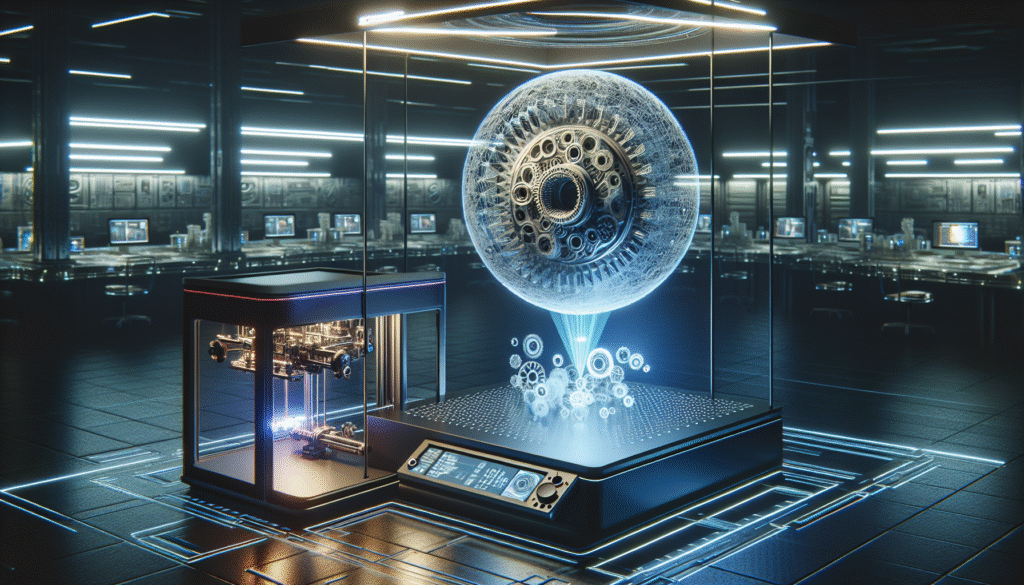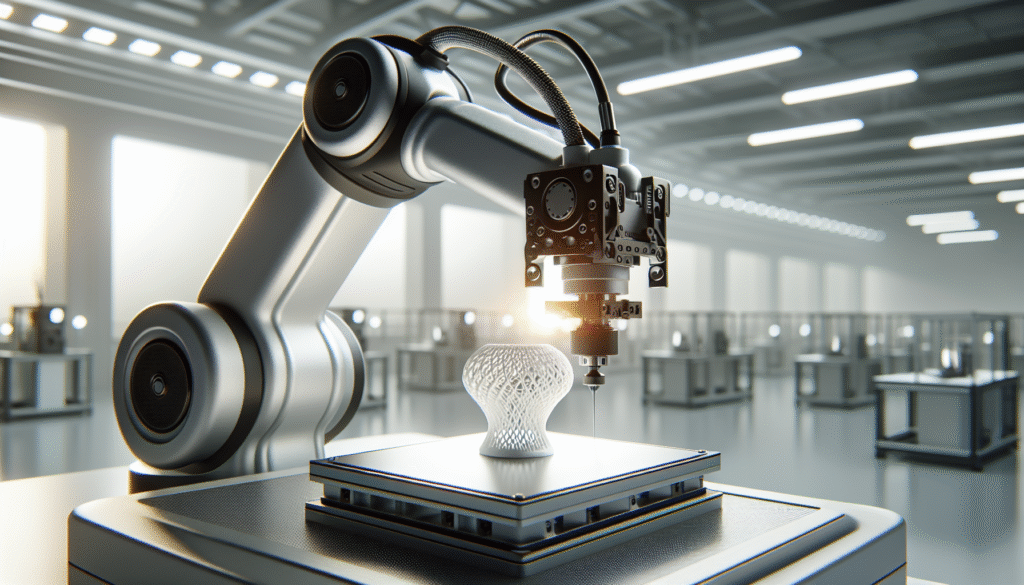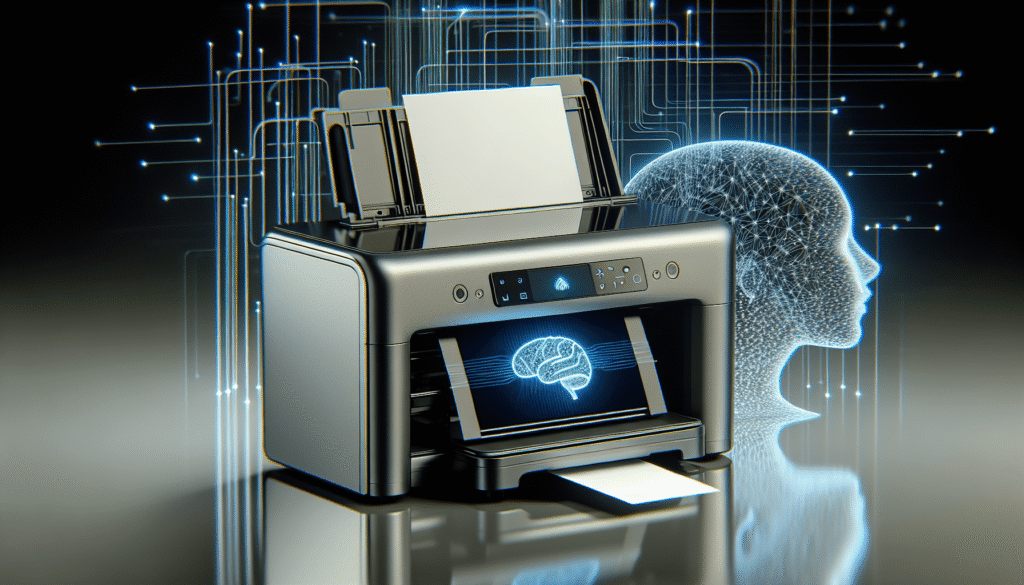Have you ever found yourself wondering how incredible it would be to see your 3D printing project come to life even before you hit the ‘start’ button? That’s where augmented reality steps in as the game-changer. This convergence of technology allows you, the creator, to witness a virtual manifestation of your masterpiece—allowing for tweaks, twists, and turns—all before the physical product emerges.
From the outside, it seems almost magical, but dig deeper, and you’ll find it’s a blend of sophistication and innovation. My goal here is to explore how augmented reality (AR) enhances 3D printing, bridging the gap between imagination and reality. Let’s embark on this journey of understanding how AR can visualize projects in unimaginable ways before they even start production.

Understanding Augmented Reality
It might help to first define exactly what augmented reality is. Simply put, augmented reality takes digital information—think images, sounds, or any other virtual enhancements—and overlays it onto the real world. If you’ve ever tried on a pair of virtual glasses using an app or wondered how a particular couch might look in your living space, you’ve experienced the wonders of AR.
The Evolution of Augmented Reality
Digging into history, who could have predicted that the widgets and gizmos once considered sci-fi dreams would be integrated into our daily lives? The progression of AR can be traced back to the 1960s, evolving through its early development stages in academic and military contexts. By the time the new millennium rolled around, AR had started inching its way into mainstream applications and gadgets. Today, it stands at the forefront of technological advancements, enhancing our tangible experiences with digital overlays.
AR in Practical Applications
It’s in our pockets, on our desktops, and before our eyes. AR apps can whisk you away to a parallel universe where information is layered seamlessly upon your immediate surroundings. Navigation systems, gaming, retail, education—all are being transformed by this phenomenon. Think Pokémon GO, where AR made hunting little creatures on city streets an exhilarating experience. Or Ikea’s app, simplifying the furniture-buying process by virtually placing items in your live rooms before you buy.
3D Printing: A Brief Overview
Switching gears, let’s explore the fascinating world of 3D printing. I always picture myself as a modern-day creative wizard, conjuring objects with a mere flicker of imagination and a swipe of my hand over a 3D printer. Although not quite that easy, the essence holds some truth.
The Fundamentals of 3D Printing
3D printing, or additive manufacturing, constructs objects layer by layer from materials such as plastic, resin, or metal. A concept is designed with specialized software, sliced into digital cross-sections, and built slice-by-slice. Imagine piling sheets of paper on top of one another until you form a three-dimensional structure. That’s the gist.
The Diverse Applications of 3D Printing
From prototyping in businesses to creating custom medical implants, the versatility of 3D printing is boundless. It covers sectors like architecture, healthcare, automotive, and even fashion. Each field finds its way to harness this innovative technology, creating marvels previously deemed impossible.
Marrying Augmented Reality and 3D Printing
Now, here’s where things get downright fascinating. Think about the synergy when augmented reality’s visualization prowess couples with 3D printing’s creation capabilities. It’s like a virtual rehearsal before the main show, ensuring perfection and minimizing errors.
The Visualization Advantage
One of the standout strengths of AR in 3D printing is its ability to present a virtual preview of your product. Instantly, you can view your design, judge scales, pinpoint inaccuracies, and gather feedback—all without producing a single physical item. Need some persuasion? Imagine sculpting a grand statue, printing it, and THEN realizing that the nose looks slightly peculiar. AR allows you to catch these details early on.
Improved Project Planning and Execution
By visualizing projects in augmented reality, planning becomes more comprehensive. You can anticipate the project’s footprint, assess potential obstacles, and ensure spatial compatibility without guesswork. It’s like having a digital crystal ball guiding decisions before making irrevocable commitments.
Collaborative Creation Made Easy
Collaboration is a crucial component of design projects. AR steps in to provide a shared canvas where team members, regardless of geographic distances, can interact with and modify designs in real-time. It turns critique sessions into immersive experiences where each participant can see and manipulate designs from multiple angles.

Challenges and Considerations
While the marriage of AR and 3D printing is a dream for creators (I swear I’m not exaggerating), it’s important to note that challenges abound.
Technological Limitations
Advanced technology comes with its own set of teething issues. Rendering high-quality AR visuals requires robust hardware and sophisticated software. Plus, as with most budding technologies, there’s a learning curve involved, requiring time and patience to master.
Cost Implications
Introducing AR to a 3D printing workflow might conjure images of dollar signs floating away from your theoretical wallet. The costs linked to acquiring AR-compatible devices, relevant software, and training might deter certain enthusiasts and small-scale operators.
Overcoming Initial Skepticism
Let’s not forget about convincing those hardline traditionalists. Anyone entrenched in time-honored methods might hesitate to embrace methods labeled “futuristic” or “experimental.” Gradually demonstrating value through successful implementations might help in swaying the skeptical.
The Future: Endless Possibilities
Both AR and 3D printing rest on the precipice of something great—individually and collectively. I’m excited about the potential pathways where these technologies might wander off to.
Evolving User Interfaces
As user interfaces evolve, we might see AR and 3D printing becoming even more user-friendly, inviting even the most tech-averse among us to partake in this digital renaissance.
Expanding Industry Applications
Currently, the scope is vast, but imagine the untapped industries just waiting to be woven into the fabric of this technological duo. Real-time construction visualization on architectural sites? A holographic fitting room for bespoke couture? The mind reels at the possibilities.
Enhanced Collaboration Tools
I’m optimistic about more intricate collaboration tools where AR and VR converge to allow tactile interactions, providing whole teams with the sensation of physically manipulating a project halfway across the world.
Case Studies: Real-World Applications
Theories are all good, but you must be itching to hear about real-world applications. Spanning diverse sectors, let’s delve into how AR and 3D printing are creating ripples.
Healthcare: Precision and Customization
In the medical arena, precision can’t be compromised. Surgeons can utilize AR to view complex internal architectures or pre-visualize surgeries with a 3D replica of specific organs. Additionally, custom prosthetics made using 3D printing can be fine-tuned in virtual environments before their actual creation.
Manufacturing: Efficiency and Quality Control
AR lets manufacturers visualize assembly processes, with virtual hands-on experience enhancing efficiency. Simultaneously, quality control becomes breezier with 3D-printed prototypes being assessed as holographic overlays before production scaling.
Education: Immersive Learning Adventures
In classrooms, combining AR with 3D printing morphs traditional learning into an adventure. Interactive lessons come to life, allowing students to construct, visualize, and manipulate objects, enhancing comprehension and retention.
Architecture: Holistic Design Reviews
Architects can step inside their virtual buildings, conducting holistic design reviews. It’s like being in ten places at once, feeling the space and understanding the flow without turning a single stone in the physical world.
Why You Should Consider AR in Your 3D Printing Ventures
As someone who loves crafting with a dash of digital flair, why should you consider diving into this tantalizing combo of AR and 3D printing?
A Pairing that Promises Precision
Precision in any craft is paramount. The augmented reality preview offers unparalleled accuracy, acting as a rehearsal space to eliminate any mishaps or unexpected design anomalies.
An Investment in Innovation
While the costs might seem daunting, understanding AR’s potential return on investment is essential. By forestalling errors and reducing material wastage, your initial investment might quickly return dividends.
Staying Ahead of the Curve
Adopting AR in your 3D printing practice ensures you’re not just playing catch-up but staying miles ahead. It’s a forward-thinking, competitive advantage that keeps you on top in the ever-evolving digital landscape.
How to Get Started
Let’s talk about dipping your toes in these exciting waters. Where does one start to blend the worlds of AR and 3D printing? It might feel like venturing into the wild, but guided exploration can go a long way.
Step 1: Evaluate and Choose Tools
Survey the vast ocean of AR tools and 3D printers. There’s equipment tailored for beginners right up to advanced users. Select tools that gel with your current expertise yet push you beyond your comfort zone.
Step 2: Start with Small Projects
Test the waters with manageable projects. Begin by visualizing simple designs with AR, examining their viability before jumping onto the larger scale endeavors.
Step 3: Experiment and Iterate
The beauty of merging these technologies is its trial-and-error nature. Your initial steps might have hiccups, but embrace them as learning experiences, continuously iterating and refining your creations.
Step 4: Keep Learning and Networking
Always be willing to learn. Engage with communities and forums. Fellow creators might hold insights you’d never stumble upon solo.
Conclusion
As our world grows smaller with digital advancements, the partnership between augmented reality and 3D printing emerges as a beacon for creators, allowing unprecedented pre-production visualization. It promises precision, reduced errors, creative confidence, and boundless potential. Isn’t it wonderful how a touch of augmented magic propels our inventive spirits further than we ever imagined? I, for one, am thrilled to see where it leads us next.


